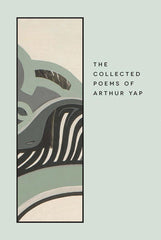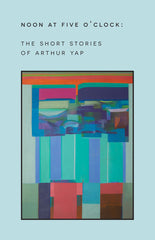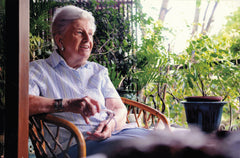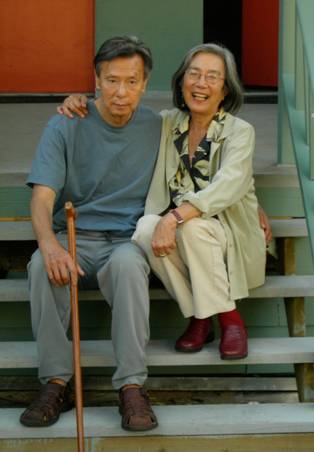News
Follow NUS Press on
#BuySingLit Highlights (Part 1) February 21, 2017 10:00
NUS Press is proud to take part in the #BuySingLit campaign, the first nationwide initiative led by the local publishing industry to promote the reading and purchasing of Singapore literature. In addition to discounts on selected titles available on our web store, we are also highlighting literary and non-fiction titles in a series of blog posts throughout the week.
Our first installment showcases the Press’s literary publications.
|
The Collected Poems of Arthur Yap By Arthur Yap, with an introduction by Irving Goh Sometimes referred to as a “poet’s poet,” Arthur Yap (1943–2006) published four major collections between 1971 and 1986, all of which are now out-of-print. With color reproductions of original cover art, many of which are Yap’s own paintings, and a critical introduction by Irving Goh, this volume of collected poems represents the burgeoning of recent scholarly activity surrounding his oeuvre. |
 |
|
Noon at Five O’Clock: The Collected Short Stories of Arthur Yap For the first time ever, the rarely-seen short stories of Arthur Yap are brought together in a single volume of collected work. These short stories are less sprawling tales than miniature vignettes—or what Shirley Geok-lin Lim calls “his little area of animation”—all of which proffer glimpses into a mind constantly grappling with the aesthetics of global modernism with the lived experiences of modernity in a newly independent Singapore. |
 |
|
If We Dream Too Long Widely regarded as the first Singapore novel, If We Dream Too Long explores the dilemmas and challenges faced by its hero, Kwang Meng, as he navigates the difficult transitional period between youthful aspirations and the external demands of society and family. Since its first publication in 1972, Goh's novel has moved and delighted generations of readers and was most recently given a new lease of life and adapted into an interactive theatre-dinner production by Marc Nair and AndSoForth in May 2016. |
 |
|
Writing Singapore: An Historical Anthology of Singapore Literature This volume, which chronologically surveys literary work from the nineteenth to the twenty-first century, broadens the idea of a national literature with its inclusion of stories and poems from the Malay Annals and the Straits Chinese Magazine, as well as classic and forgotten work by Lee Kok Liang and Kassim Ahmad. With its rich offerings of primary material and criticism, Writing Singapore is an excellent resource for anyone with an interest in Singapore literature. |
 |
Five Minutes with Brian Bernards November 22, 2016 15:00
In this special edition of our author-interview series, Professor Philip Holden from the National University of Singapore conducted an email interview with Professor Brian Bernards on the occasion of the publication of the Southeast Asian edition of Writing the South Seas: Imagining the Nanyang in Chinese and Southeast Asian Postcolonial Literature. An assistant professor at the University of Southern California, Bernards works in three languages – English, Chinese, and Thai—and his book thus gives a revisionary perspective on the literatures of the region, and indeed the way in which we imagine Southeast Asia itself.
University of Singapore conducted an email interview with Professor Brian Bernards on the occasion of the publication of the Southeast Asian edition of Writing the South Seas: Imagining the Nanyang in Chinese and Southeast Asian Postcolonial Literature. An assistant professor at the University of Southern California, Bernards works in three languages – English, Chinese, and Thai—and his book thus gives a revisionary perspective on the literatures of the region, and indeed the way in which we imagine Southeast Asia itself.
Professor Holden's and Professor Bernards' exchange was first published on singaporepoetry.com. We are pleased to present some excerpts of their lively discussions:
Philip Holden: As someone who has been studying auto/biography, I’m always interested in the life stories of scholars. What drew you to study Chinese and Thai? And what fostered your interest in the literatures of Southeast Asia?
Brian Bernards: When I was 9 years old, a family from Shanghai (a father, mother, and their 2-year-old daughter) moved in with my family at our home in Minneapolis. The father was studying engineering at the University of Minnesota, and the mother, who later went on to study accounting, became our live-in babysitter. On occasion, our two families had meals together, and the boiled dumplings (shui jiao) our sitter cooked became quickly my new favorite dish. Our good friends from Shanghai lived with us for about two years, when the father graduated and found a plush job in Milwaukee. Starting high school about three years later in 1992, I opted to take Mandarin because of my prior exposure to Chinese culture (and cuisine!). I first traveled to mainland China in 1998, where I studied for a year at Sichuan University in Chengdu. My language professor recommended Chengdu because she had done research there, she knew I wanted to tread beyond the typical path of studying in Beijing, Shanghai, or Taipei, and, most importantly, she knew I would like the spicy ma-la food there. Living and attending school in Chengdu certainly opened my eyes, and my taste buds, to new experiences, flavors, and possibilities.
PH: Given your exposure to different disciplines, what are your thoughts on inter-disciplinary studies?
BB: I have always enjoyed literature (especially fiction and poetry), music, and film. As a student and traveler, I felt I could better connect with a place, a culture, a society, and its history through the very personal stories and creative imagination conveyed in fiction and memoirs by authors who were from or who were very familiar with that society. While Southeast Asian studies in the US is largely a social science-oriented field, I was fortunate to take history and anthropology classes as an undergraduate from professors who, rather than assigning dry textbook readings, assigned novels by authors such as Pramoedya Ananta Toer, José Rizal, Duong Thu Huong, Ma Ma Lay, and Kukrit Pramoj, to be read in conjunction with course lectures. I was very inspired by this approach to history and cultural studies, not only because it put the human impact of historical events and social transformations in relatable narratives rather than abstract figures, but also because the micro-histories we encountered in such literary narratives often challenged or even contradicted the standard interpretations and “big picture” perspectives taken for granted in the official histories. I am grateful to my teachers for cultivating the approach that would stick with me as I moved forward into graduate studies.
PH: What was the process of writing Writing the South Seas like?
BB: Writing the South Seas began as a way of combining my interests and background knowledge in modern Chinese literature, Southeast Asian studies, and postcolonial literary theory in an attempt to make a novel contribution, and hopefully a type of critical intervention, in each field. I felt the varying approaches from these different fields could be mutually illuminating in ways that the disciplines had yet to sufficiently consider. Mainly, I sought to bring a Southeast Asia-centered perspective to the study of literatures in Chinese on and from the region. Luckily, I conceived the project at the time that Sinophone studies was emerging and bringing about a sea-change in the modern Chinese literary field. Sinophone studies not only emphasizes cultural networks across national and ethnic boundaries, but also seeks to situate such networks locally in their multilingual milieu. In this sense, my interests in Anglophone literature and Thai-language literature from Southeast Asia, which might have otherwise been seen as irrelevant or marginal to modern Chinese literary studies, could provide an insightful comparative perspective that showcased the cross-lingual interactions and relationships of these Sinophone literary networks. I owe a significant intellectual debt to the pioneering work of Shih Shu-mei in this regard.
PH: The cover of your book will have a particular resonance for many Malaysians and Singaporeans. Could you explain this?
BB: I really have you to thank for this, Prof Holden, as you were the first person to recommend Suchen Christine Lim’s novel Fistful of Colours to me when I began researching Anglophone authors in Singapore. As you know, at the end of the novel, the protagonist returns to Kuala Jelai, her home village in Malaysia, from Singapore, and she becomes moved viewing the large wall murals while waiting for her train at the Tanjong Pagar Railway Station. When I read this passage, I wanted to see the murals myself, though at the time I had no idea they would later provide the source material for the cover of my book.
That was before the station closed. When it was operational, the station, along with the Keretapi Tanah Melayu (KTM) railway tracks, was an important living legacy of the intimate relationship, common colonial history, and shared culture between the two countries. Now that it is closed, it can only serve as a “heritage site” – a relic or a reminder of that past. For a lot of Malaysians and Singaporeans who grew up when the two societies were more integrated, Tanjong Pagar is bound to be a source of nostalgia, especially because it conjures a more rustic landscape and older colonial architecture that contrasts with the image of Singapore as a city of glistening skyscrapers and squeaky-clean air-conditioned malls. I think this nostalgic sentiment regarding the railway station is quite obvious in “Parting,” director Boo Junfeng’s contribution to the omnibus film, 7 Letters: he uses the space of Tanjong Pagar to tell the story of an interethnic romance against the backdrop of racial riots in the 1960s.

Interior of Tanjong Pagar Railway Station, 2010
(Image credit: Jacklee, Wikimedia Commons)
Of the six triptych murals in the station, the one with the commercial maritime focus showing the harbour was the most relevant to my book in its entirety, so I commissioned an image of that mural for the cover. The different types of ocean vessels in the image, from a sampan to a junk to a passenger steamship, really captured the varying modes of maritime crossings and convergences that the Nanyang has historically signified. And it’s beautifully done.
****
NUS Press would like to thank singaporepoetry.com's founding editor, Koh Jee Leong for granting permission to republish these excerpts.
NUS Press at the 2016 Singapore Writers Festival November 4, 2016 11:00
NUS Press is pleased to be participating in this year's Singapore Writers Festival (SWF)! Themed "Sayang," the festival will feature close to 320 writers, speakers and performers between November 4–13.
To celebrate, we are offering special prices for this selection of titles!
We will also be featured in these main events:
Singapore Untold | 6 Nov, 1–2pm |
Asian Civilisations Museum (Ngee Ann Auditorium)
Our authors, Ann Wee, a pioneer of social work education in Singapore and author of A Tiger Remembers: The Way We Were in Singapore, and Lim Cheng Tju, co-author of The University Socialist Club and the Contest for Malaya: Tangled Strands of Modernity, will be appear in this panel alongside Nilanjana Sengupta to discuss why they have written stories that are often not found in Singapore history textbooks. They will also talk about their experience of uncovering and writing these stories.
You can attend this event with a SWF Festival Pass (S$20), which is available via SISTIC.


Ann Wee (left) and Lim Cheng Tju (right) (Image sources: Singapore Writers Festival).
Between the Lines: Rant & Rave II | 4–6 Nov, various times |
School of the Arts (SOTA) Studio Theatre
Simultaneously a crash course in, and a love letter to SingLit, Between The Lines: Rant & Rave II will take you on an odyssey of the evolution of the English-language literature scene in Singapore through the decades. Actors Serene Chen and Jean Ng as they take on the roles of real-life poets, novelists, publishers and many more in this loving tribute to the written word.
NUS Press is pleased that a number of books and authors we have published (from Edwin Thumboo's 1973 book, Seven Poets: Singapore and Malaysia, to Arthur Yap's Collected Poems) will be featured in this performance!
Between the Lines was commissioned by SWF and is presented by The Finger Players. Tickets (S$35) are available via SISTIC.
Serene Chen and Jean Ng rehearsing for "Between the Lines" (Image courtesy of The National Arts Council).
The Paper Trail: A Backroom Tour of Singapore Publishers (SOLD OUT) |
5 Nov, 9am–1pm | Various locations
Conjuring Dublin and Singapore in Goh Poh Seng's work August 24, 2015 14:03
The Irish Ambassador Geoffrey Keating and his wife generously hosted a reception on 14 August 2015 to celebrate the publication of Singapore literary pioneer Goh Poh Seng’s Tall Tales and Misadventures of a Young Westernized Oriental Gentleman, a vivid and evocative memoir of the author’s time in Dublin as a student in the 1950s. The evening was convivial, and a testament to the power of words to make one hear, feel and see cities and persons anew.
Joined by guests from academia, the embassy, and government agencies, as well as publishers, writers and personal friends of Goh Poh Seng, a few words about his memoir were said by Ambassador Keating, NUS Press Director Peter Schoppert, NTU Professor Koh Tai Ann, and Northern Irish-Canadian writer George McWhirter through Irish editor and writer Rosemary Lim.
Worlds Within World
“I loved the book”, his Excellency stated plainly. “To me, as a Dubliner, it is extremely and deeply evocative. And even though the city Dublin has changed so much over the past 60 years, the city he describes is almost instantly familiar and recognizable.”

Goh, he mused, was lucky to have made his way into the artistic and literary circles of 1950s Dublin. Indeed, one of the central stories in Tall Tales is an intense discussion with Irish poet Patrick Kavanagh over what it means to be a poet. His Excellency suggested a literary pilgrimage to the UNESCO City of Literature, enticing us to see the traces of Wilde, Beckett, and Shaw, as well as walk the paths of Joyce’s Stephan Dedalus and Leopold Bloom. In fact, Dublin prides itself on having produced the most Nobel Prizes for Literature than other city in the world.
The Reinvented Man
Next was Professor Koh Tai Ann, who was also a personal friend of Goh’s and was one of the persons responsible for the republication of Goh’s first novel with NUS Press. She regaled the audience with the insider information about its publication – and its rejection by Paul Theroux’s publisher for being “too local” – and other aspects of his life, such as the poetry slams and supper club at his establishment Rainbow Lounge, and his foresight with building conservation and tourism. But Prof Koh also pointed out that his idealism and pluck was accompanied by an overreaching and a lack of business sense.

Highlighting that the memoir was titled “Tall Tales”, she wondered about which parts were fact and which fiction. Nonetheless, Goh’s first poem was written in Ireland and the form of Goh’s first novel If We Dream Too Long had parallels to Joyce’s The Portrait of the Artist as a Young Man: as Joyce’s characters trek through Dublin, Goh’s tracks 1960s Singapore from Changi to Chinatown, to Esplanade and Tanglin Club, capturing in print both the physical landscape of the time and, through the stream of consciousness, its zeitgeist.
A Star-Lovely Art
Northern Irish-Canadian writer, and Vancouver’s first Poet Laureate, George McWhirter’s reflections on the publication were read out by Rosemary Lim, an Irish writer and editor who also also conducts literary tours of Singapore.

Like his Excellency, McWhirter enjoyed the way Goh brought Dublin to life, “Like Heinrich Böll’s Irish Journal, Goh Poh Seng’s book lets me see Ireland with other eyes and feelings for my native land that are intimate and ironical, loving and leery, spliced from something very Celtic and Chinese in the braided history that brings Poh Seng and binds him to the island. The book also has his very own way of looking, his young bucko’s oriental, will o’ the wisp in the eye. Full of cheeky curiosity, he loves theatre and goings-on, and is blessed to find himself in a city where every room and street is a stage, and there’s always something going-on. ”
Drawing the event to a close, his Excellency thanked all present and announced that dinner was served, along with free-flow Guinness, and – to hearty cheers – whisky from both parts of Ireland! Certainly an apt way to affirm that home can come to us in more ways than one.
Thanks
NUS Press would like to thank Ambassador Geoffrey Keating, his wife and the Embassy of Ireland, for their hospitality; Neil Murphy for making the connection; and Koh Tai Ann, George McWhirter and Rosemary Lim.
Notes
Goh intended to write a three-volume memoir, but unfortunately passed away before he could complete it. Margaret Goh, the wife and literary executor of Goh's estate – and once director of Singapore University Press, the former NUS Press – passed away in 2014. Their children now manage the estate.
Tall Tales and Misadventures of a Westernized Oriental Gentlemen and If We Dream Too Long are available at NUS Press.
Portrait of the artist as a young man April 27, 2015 13:30

Goh Poh Seng with his wife, Margaret, on the front steps of their home in Vancouver. Image courtesy of the Estate of Goh Poh Seng. |
The Business Times' write-up on Tall Tales and Misadventures of a Young Westernized Oriental Gentleman:
GOH POH SENG was a literary pioneer. He wrote Singapore's first novel If We Dream Too Long (1972) which depicts the hopes and frustrations of young people in the newly independent country.
He also wrote the 1966 play about family life titled When Smiles Are Done, which represents an early attempt to capture Singlish on stage. To do that, he spent a year and a half "hanging around public places with a tape recorder and listening to how people spoke".
Goh died in 2010 at the age of 73. But even though he was diagnosed with Parkinson's disease in 1995, he continued to write short stories, a number of which appear in this new book published posthumously by Ridge Books of NUS Press.
Tall Tales and Misadventures of a Young Westernized Oriental Gentleman is a collection of stories about his student days in 1950s Ireland where he had been sent at the age of 16 by his Malaysian family to study towards becoming a doctor.
It appears that it was in Ireland that Goh truly came of age. Bright, curious and cocky (he refers to himself as a "sexy fellow"), he led a bohemian lifestyle despite having earlier converted to Catholicism "on account of acute loneliness and homesickness".
Goh’s last work, Tall Tales and MisAdventures of a Young Westernized Oriental Gentleman, provides intimate insights into his formative years April 14, 2015 10:00

In the upcoming Tall Tales and MisAdventures of a Young Westernized Oriental Gentleman, Singapore’s English-language literary pioneer Goh Poh Seng records the trials and tribulations of his first steps as a poet. As an impressionable young medical student in the Ireland of the 1950s, Goh struggled between his family’s expectations that he should become a doctor and his passion for writing. While it concerns his early writing career, Tall Tales was composed in Goh’s last years, and it shows in the fluency of his mature style. The book forms a poignant finale to Goh’s literary legacy – he passed away in 2010, from complications due to Parkinson’s disease, while working on the memoir.
The memoir tells one of the common stories of the 20th century – the young colonial sent to the metropole for an advanced education – but in this case in the words of an uncommon young talent, whose ambitions for his own education went far beyond attending medical school. The nine chapters chart the awakening of Goh’s love of words and provide insights into his self-discovery. The book also reveals the extraordinary characters that shaped Goh’s literary journey. In particular he was deeply influenced by the Irish poet Patrick Kavanagh and the Irish novelist and playwright Samuel Beckett. Memorable encounters with these writers are recorded in the chapters “A Star-Lovely Art” and “Do I Dare to Eat a Peach?”.
Tall Tales is available through NUS Press’s Ridge Books imprint. It retails for S$25.68 including GST at Books Kinokuniya and leading bookshops in Singapore. Goh’s first novel If We Dream Too Long is also available at NUS Press.
In support of local literature, NUS Press is proud to present Tall Tales at The London Book Fair 2015 from 14 to 16 April.
